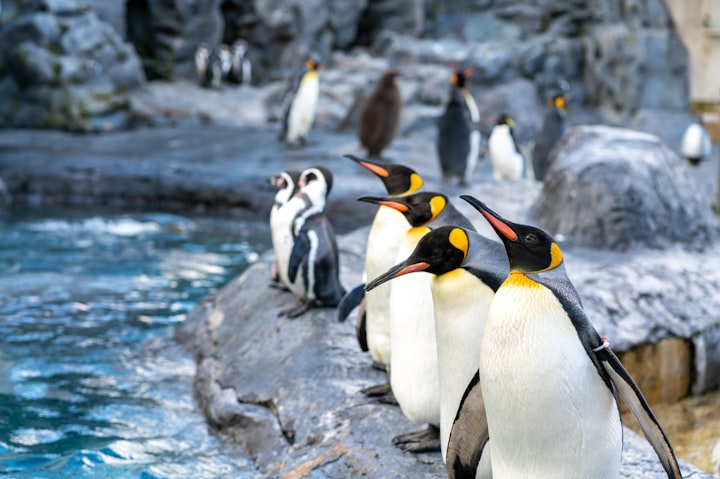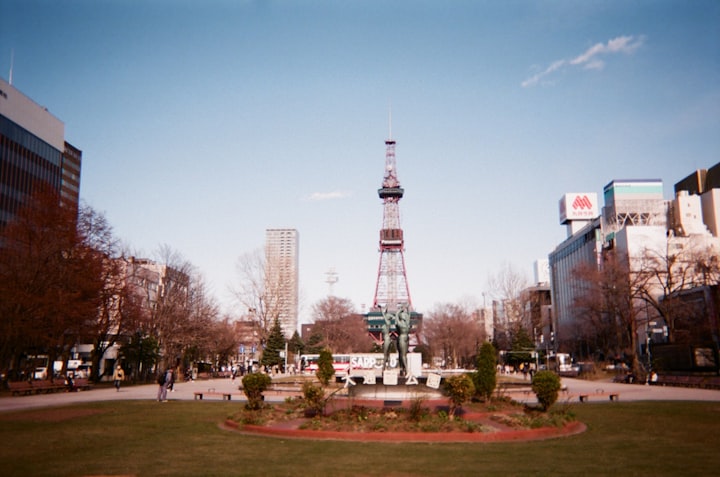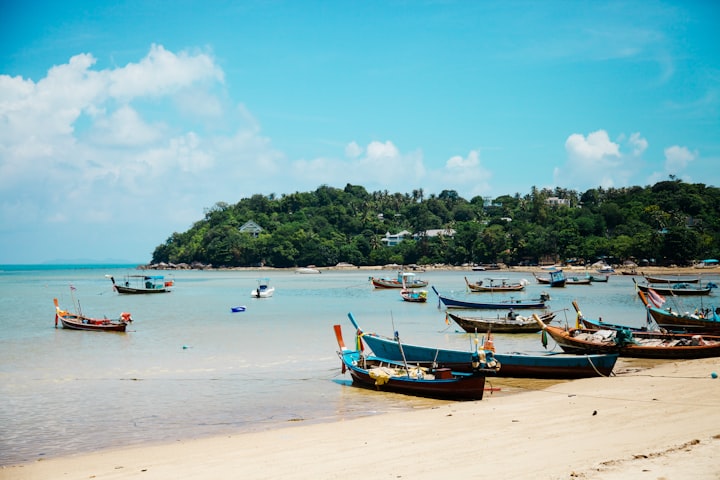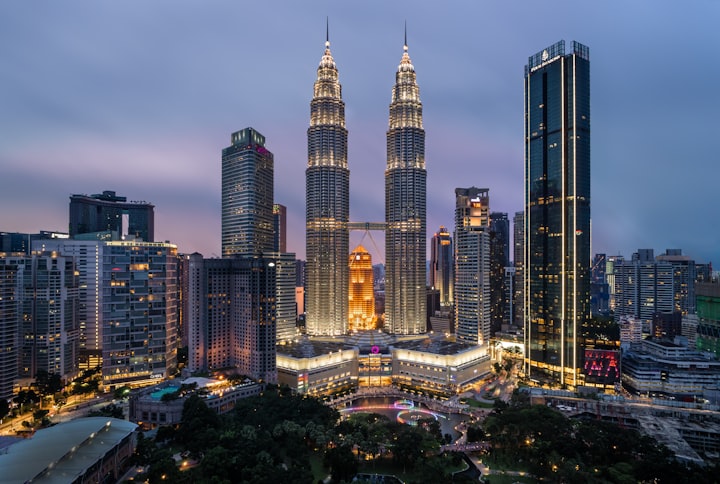
Hokkaido is one of the four major islands of Japan. It is located in the northernmost part of Japan, facing the Pacific Ocean in the east and the Sea of Japan in the west, facing Honshu in the south across the Tsugaru Strait and facing Kuboshima in the north across the Soya Strait. The entire island of Hokkaido covers an area of 83,456 square kilometers, or 22.9% of Japan’s land area, and has a coastline of 3,000 kilometers. Between 1868 and 1912, during the Meiji Era, the Japanese began to migrate to the island and cultivate it, and it gradually developed into an important food warehouse for Japan. Because of the late development of the area, the natural environment was not damaged by man, and it is still intact and pristine and is one of Japan’s most valuable natural attractions.
Sapporo is located in the middle of Hokkaido, facing the Sea of Japan at the tip of the Tokikari Plain, Japan’s largest grain-producing area, and is the capital of Hokkaido. Many of the classical buildings from the pioneering period remain in the high-rise cityscape. The Sapporo Clock Tower, which was built in the Meiji era with the introduction of Western culture and technology, and the old Hokkaido Government House are some of Sapporo’s most representative buildings.

Festivals and Celebrations
Hokkaido is a land of many unique features. Gourmet food, clean air, beautiful nature, and winter sports enjoyed amid nature are just a few of the features of Hokkaido. From small-scale village events to large-scale festivals attended by 2 million people, Hokkaido is home to a wide variety of unique northern festivals. You can make the most of your trip to Hokkaido by participating in festivals held in various parts of the country.
In summer, the Yosakoi Soran Festival, the Lake Osawa Water Festival, the Noboribetsu Jigoku Festival, the Hokkai Navel Festival, and the Orochon Fire Festival are held, and there are many fireworks displays, including the Katsura Tokachi Fireworks Festival. The Tulip Suzuran Festival in Takino Suzuran Hillside Park and the Shiba Sakura Festival in Tosomogane Shiba Sakura Park is among the various flower festivals held in early summer in Hokkaido. In winter, visitors can participate in the world-famous Sapporo Snow Festival and the Sapporo Waterfall Festival.
The Yosakoi Soran Festival, held in June, is the first of these summer festivals in Hokkaido and is a huge event that attracts approximately 2 million visitors every year. On the day of the “Noboribetsu Jigoku Festival,” a majestic march of the King of the Damned is held on Gokurakudo, the main street of the Onsen Street. The “Hokkai Navel Festival” is a festival in which the belly is painted with a face called “Togami,” and many unique and humorous faces are seen in the shopping streets. At the Orochon Fire Festival, after lighting a bonfire, the Moyoro shell people (Okhotsk people) march and dance to pray for a good harvest, carrying torches. It is the largest in Hokkaido.
During the “Tulip Suzuran Festival,” approximately 230,000 tulips of 200 different species bloom in the park, transforming the entire hill into a dazzling landscape.
The Sapporo Snow Festival is one of the three major snow festivals in Japan and is world-famous, attracting more than 2 million domestic and foreign visitors every year. The waterfall reflects the sun’s rays in the daytime, but at night it glows with colorful light, making it a fantastic sight to see day and night.

Best time to visit
Summer (June — August) and winter (December — February) are the best times to travel to Hokkaido.
Both local and international tourists flock to Hokkaido during the high season when hotel prices rise and transportation is often difficult to find. If you choose to visit during the popular season, try to miss a public holiday in Japan to avoid any inconvenience during your trip.
December — February:
Winter is the season when Hokkaido is filled with snow, the suburbs open one after another, and the season is colder but livelier than ever. You can enjoy watching the snow and participating in snow activities, and if it’s Christmas time, it’s a fantastic experience.
The Sapporo Snow Festival, held in early February every year, is the biggest event in Hokkaido in winter when Sapporo is transformed into a silvery-white fairy tale as the snow settles throughout the winter, and it is also a good time to visit the hot springs in Hokkaido.
Please note: The New Year holiday runs from December 29th to January 3rd, and many tourist attractions are closed during this period, so if you are celebrating New Year’s Eve in Hokkaido, please consider the inconvenience of the closures.
April-May:
Hokkaido has a short spring and generally low temperatures, and cherry blossoms bloom around the May Day holiday.
June — August:
Summer is the lavender season in Hokkaido, and Furano is a world-renowned lavender producer. From early June to late August every year, the hillsides and plains become a sea of purple blossoms, making it the “Provence of the East”.
September-November:
Autumn comes early in Hokkaido, and during the eleventh month of the year, you can enjoy the red foliage of the mountains, but it seems that Hokkaido is overlooked by maple-gazers.

How to get to Hokkaido from Tokyo
If you are flying from Tokyo to Hokkaido, you can arrive at any of the major airports in Hokkaido in about 1.5 hours. Since Hokkaido is the largest municipality in Japan, it is advisable to consider which airport you should land at, based on your travel plans, as the airports may vary depending on where you are traveling.
- To Hakodate, go to Hakodate Airport.
Hakodate is located in the southern part of Hokkaido, and is famous for the night view of Mt. To get to Hakodate, it is convenient to take a train to Hakodate Airport. It is recommended to take a shuttle bus from the airport to the city (about 9km).
- New Chitose Airport for Sapporo and Otaru.
Take a flight to New Chitose Airport to visit Sapporo, which has dominated Hokkaido’s food culture, economy, and politics, or Otaru, which has a nostalgic town and a mecca for dating. It takes about 40 minutes by train or 80 minutes by highway bus to get from the airport to downtown Sapporo.
If you want to go to Otaru from the airport, you will need to change buses in Sapporo, so we recommend taking the JR Rapid Airport Express (train). The train takes about 75 minutes and costs 1,780 yen.
- To Furano, go to Asahikawa Airport.
Furano, located in the middle of Hokkaido, is a beautiful area that has been used as a filming location for many movies and TV shows. In July every year, people from all over Japan flock to the area to see the famous lavender fields. If you are traveling from Tokyo to Furano, please use Asahikawa Airport.
From the airport, you can take the Furano bus (Lavender) to Furano Station, which takes about one hour. The fare is 770 yen.
- New Chitose Airport, which has many international flights.
If you use New Chitose Airport, which has many international flights, you can get to Seoul in about 2 hours and 45 minutes, to Taipei in about 3 hours and 50 minutes, to Hong Kong in about 4 hours and 50 minutes, to Shanghai in about 3 hours and 45 minutes, and to Guam in about 4 hours and 40 minutes. Please note that flights may or may not depart every day, so please check the dates before making reservations.

Sapporo
Sapporo is the capital of Hokkaido and is the most northerly of Japan’s cities with a population of over a million people. Most people consider Sapporo as their first or last stop on their way to or from Hokkaido, with its unique northern flavor, countless food shops, and some of the best shopping in Hokkaido. Attractions in Sapporo are dominated by historical sites and landmarks, with downtown’s Odori Park being one of the most vibrant places in Sapporo all year round, while Hokkaido White Lovers Park, further away from the city center, is a must-visit romantic spot for couples.
Sapporo Clock Tower
The Sapporo Clock Tower is the last in Japan and has been designated as a national important cultural asset, with the bell ringing for more than 120 years. It is the last clock tower in Japan and has been designated a national important cultural asset. The clock tower’s chime chimes are heard throughout Sapporo at all hours of the day.
Odori Park
Chase Park is in the center of town and is home to many city sculptures, fountains, and lilac trees. In summer the park puts up many courtyard beer shops, and in winter it hosts Sapporo’s biggest event, the Sapporo Ice Festival, during which this large park is filled with beautiful ice sculptures.
Sapporo Beer Factory
The Sapporo Beer Factory is one of the most representative beer gardens in Sapporo, where you can enjoy a variety of beers in the lobby on the first floor, as well as a selection of beers by the glass. You can’t get this kind of beer outside because of the strict requirements for fermentation and freshness. Inside the Sapporo Beer Garden, you can learn about the history of beer in Sapporo, the brewing process, and sample freshly brewed beer in the large beer hall and beer museum, in addition to preserved beer manufacturing plants and fermentation tanks.
Shiroi Koibito Chocolate Park
Even if you’ve never been to Hokkaido, you’ve heard of the Shiroi Koibito Sandwich, Hokkaido’s most iconic specialty. Shiroi Koibito Chocolate Park is a park run by the makers of Shiroi Koibito that combines experience, sightseeing, shopping, and dining, allowing visitors to see the production process, make their chocolate, and enjoy a variety of delicious desserts.

Otaru
Not far from Sapporo, Otaru is a small, quiet port city. Historically, Otaru was an important trading port and financial center, with many European-style buildings remaining, but it gradually settled down as Hokkaido developed. Today, Otaru is known for its romantic atmosphere and delicious sweets.
Otaru Canal
The canals are especially beautiful at night when the lights are on, or in winter when you are strolling through the snow. The best vantage point is from the Asakusa Bridge.
Otaru Yatsuhodo
Built-in 1912, the Otaru Yayinto Hall is a classical red brick building with an exterior that looks like a fairy tale. Inside, you’ll find a dazzling collection of thousands of musical boxes in a variety of shapes and themes, all set in a fairytale world. Outside the shop is a large steam clock that plays a beautiful melody at regular intervals.
Taisho Whistle House
Whistle means glass, and Otaru is famous for its handmade glassware. At this Taisho whistle shop, you can not only buy glass ornaments and jewelry from Retro all over the place, but you can also make your glassware to your liking.

Hakodate
Hakodate was developed as a port city for foreign trade in the late 19th century and is the gateway to Hokkaido. It is connected to Honshu by the Aohan Tunnel and was the first stop on the train to Hokkaido. Today, Hakodate is a beautiful northern port city with a fan-shaped night view, one of the top three night views in the world.
Mt. Hakodate
Hakodate Mountain, which is 334 meters above sea level, is located on the west side of Hakodate City, and at night you can see the night view of Hakodate, which is regarded as one of the three most beautiful night views in the world, making it a must-see stop in Hakodate.
Wureungaku Park
It was the first Western-style castle in Japan. In the fourth year after its completion, the “Hakodate War” took place, and during the Meiji Restoration, supporters of the Shogunate fought their last battle against the Emperor’s army. The castle is now only the outline of the castle walls, and the inside of the castle has been transformed into a garden full of cherry blossoms, making it one of the most famous spots for cherry blossom viewing in Hokkaido.

Douou Area
Aside from Sapporo and Otaru, many consider the best of Hokkaido tourism to be in the central part of the Dao. Touring farms, natural hot springs, lakes, and mountains, the area offers a relaxing alternative to the hustle and bustle of the city.
Furano
Furano is located in the middle of Hokkaido, and in summer, Furano is the best place to see lavender. In early summer, the entire hills of Furano are covered in purple, creating a vast sea of purple flowers. Many people like to take photos and advertisements here. One of the most colorful is Furano Farm, which is divided into five colorful flower zones.
Biei
Biei is adjacent to Furano, also known for its flower fields but more pristine than Furano, and attracts artists and nature lovers alike.
Asahikawa Zoo
The northernmost zoo in Japan is now the most popular in Japan because of its loving design and operation. The Asahikawa Zoo has many polar animals, emperor penguins, polar bears, snow wolves, and more. The zoo is designed to be very humane, with a variety of safe viewing angles so you can get up close and personal with these animals.

Eastern and Northern Provinces
This is a pristine area of Hokkaido that retains large natural parks and animal habitats.
Abashirishi
Abashirishi is the largest town on the Okhotsk coast in northeastern Hokkaido, where fish are abundant and fresh seafood can be enjoyed year-round. At the Okhotsk Drift Ice Museum, you can see drift ice originals even in the summer, and you can experience the cold world at -15 degrees below zero.
Kushiro
Located in the southeastern part of Hokkaido, Kushiro City is known as the “City of Fog”. To the north of Kushiro City is Japan’s largest wetland, the Kushiro Marsh, which covers more than half of the Kushiro Plain.
Area
Obihiro City, located in the southeastern part of Hokkaido, is surrounded by primeval forest on the shores of Lake Shikaribetsu at the southeastern end of Daisetsuzan National Park. It is surrounded by virgin forest and has excellent water quality, including Lake Shikaribetsu Onsen and Tokachi River Onsen.
Wakkanai
Wakkanai is the northernmost port city on Japan’s land, and the harbor is rich in fishery and seafood. The highest lighthouse in Hokkaido, the Wakkanai Lighthouse, is located on Cape Nokanbo, where you can enjoy the sunset.






Comments
There are no comments for this story
Be the first to respond and start the conversation.